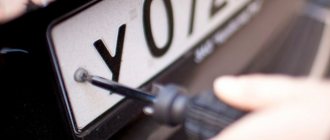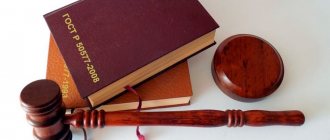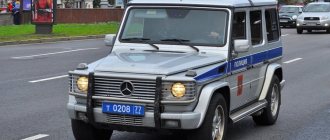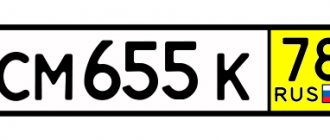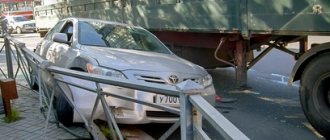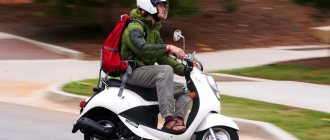Good afternoon, dear reader.
From January 1, 2021, a new law “On state registration of vehicles in the Russian Federation” should come into force. This document is quite voluminous and is discussed in 4 articles on pddmaster.ru: part 1, part 2, part 3, part 4.
Among other innovations, the law “On Vehicle Registration” states that if a car’s engine number or body number is destroyed, the car owner can restore these numbers. The VIN recovery procedure will be discussed today:
- What is additional marking?
- In what cases is an additional number applied?
- What does the additional marking look like?
- Where is the additional number applied?
- Which organizations can apply new numbers?
- What is needed to apply additional markings?
- How are the results of marking applied?
The regulatory document regulating the application of additional markings is Decree of the Government of the Russian Federation of December 12, 2021 No. 1653 “On approval of the requirements for additional marking of a vehicle, the procedure for its application and application.” It comes into force simultaneously with the law “On Vehicle Registration”, that is, on January 1, 2021 .
What is additional marking?
1. Additional marking of the vehicle (the main component of the vehicle) is the identification number of the vehicle (the main component of the vehicle), additionally applied to the main component of the vehicle in cases established by the Federal Law “On State Registration of Vehicles in the Russian Federation and on Amendments to certain legislative acts of the Russian Federation" (hereinafter referred to as the Federal Law, additional marking).
In simple terms, additional marking is another number that must be “stamped” on the body or engine of the car.
In what cases is an additional number applied?
5. Additional markings are applied if identification of a vehicle is impossible due to the fact that the marking of this vehicle or the marking of the main component of this vehicle has been destroyed due to corrosion or repairs, or has been tampered with, hidden, altered or destroyed due to illegal actions of third parties, as provided for in Part 2 Article 20 of the Federal Law.
There are several situations when an additional body or engine number may be stamped:
- the number has been destroyed by corrosion (the metal is rusty);
- the number was destroyed during repairs (for example, when straightening the body after an accident);
- the number was “interrupted” by hijackers.
Please note that in all of these cases, we are talking about the fact that the number was originally applied to the body or engine, but later it became unreadable.
Note. If the body initially did not have a VIN number, for example, when independently manufacturing a single vehicle, then the law does not allow applying an additional number to the body.
How do I formalize a replacement?
That is, the combination of the VIN number on the car and the VIN number in the PTS together seems to say: this car is safe for the roads of the Russian Federation.
Not long ago, a new order was issued under number 399. It is this that is more relevant to the issue under consideration. The law regulates the procedure for registering any replaceable car components, but also provides a list of restrictions and prohibitions.
After completing the above process, you need to undergo vehicle diagnostics, comparable to a technical inspection. Next, you receive updated completed documents and the traffic police issues a certificate that all changes made correspond to those stated on paper, after which the registration information of the car (license plates) is changed if there is a need.
Obtain permission from the traffic police. To do this, you need to write an application to the technical supervision department about the desire to replace the housing with explanations. You will need to provide a complete list of documents for the vehicle that needs replacement, and for the body that will be installed. Then, at the request of the traffic police officer, you may need to diagnose the car in the laboratory.
What does the additional marking look like?
3. Application of additional markings includes an indication of the identification number assigned by the vehicle manufacturer or the number of its main component, as well as the alphanumeric designation of the organization that carried out its application, which is used as:
- for certification bodies or testing laboratories (centers) - the organization code contained in the unique identification number of such an organization according to the information from the Russian part of the unified register of conformity assessment bodies of the Eurasian Economic Union;
- for organizations that manufacture vehicles - the international identification code of the manufacturer, the requirements for which are established by the technical regulations.
The specified alphanumeric designation (code) is entered on one line with the identification number through a separator (for example, the sign “*”) or on a separate line under the identification number with the specified separator placed at the beginning and end of it.
So, the new VIN consists of two parts:
- old VIN;
- code of the organization that applied the new marking.
Two parts of the code can be written on one line separated by the “*” symbol:
[old VIN]*[organization code]
The second recording option is in two lines. In this case, the “*” symbol is placed on both sides of the organization code:
[old VIN] *[organization code]*
Where is the additional number applied?
4. Additional markings are applied to elements of the vehicle that have not been dismantled and (or) altered in close proximity to the place intended by its manufacturer for marking. If there is no technical ability to comply with such a requirement, the closest suitable place for this purpose is selected as the place for applying additional marking.
Additional marking is applied using an automated marking machine in compliance with the requirements established by paragraph 1.4 of Section 1 of Appendix No. 7 to the technical regulations of the Customs Union “On the safety of wheeled vehicles” (TR CU 018/2011), adopted by the decision of the Customs Union Commission dated December 9, 2011 N 877.
The location for applying the additional VIN is selected as follows:
- it should be as close as possible to the place where the old VIN was located;
- The location must be selected on an element of the vehicle that has not been dismantled (removed) or modified (not repaired).
For example, if the old body number was located in the spare wheel niche in the trunk, then the new VIN must be applied in the same niche.
Which organizations can apply new numbers?
2. Additional marking is applied:
- certification bodies and testing laboratories (centers) accredited in accordance with the legislation of the Russian Federation in the national accreditation system to carry out work to assess the conformity of products with the requirements of the technical regulations of the Customs Union “On the safety of wheeled vehicles” (TR CU 018/2011), adopted by decision Commission of the Customs Union dated December 9, 2011 N 877, included in the Russian part of the unified register of conformity assessment bodies of the Eurasian Economic Union in accordance with the Procedure for including accredited conformity assessment bodies (including certification bodies, testing laboratories (centers) in a single register of bodies for assessing the conformity of the Eurasian Economic Union, as well as its formation and maintenance, approved by decision of the Council of the Eurasian Economic Commission dated December 5, 2021 N 100;
- organizations that are manufacturers of vehicles included in the Russian part of the unified register of authorized bodies (organizations) of the member states of the Eurasian Economic Union and organizations that are manufacturers of vehicles (vehicle chassis), self-propelled vehicles and other types of equipment that issue passports (electronic passports) vehicles (vehicle chassis), self-propelled machines and other types of equipment in accordance with the Procedure for the formation and maintenance of a unified register of authorized bodies (organizations) of the member states of the Eurasian Economic Union and organizations - manufacturers of vehicles (vehicle chassis), self-propelled vehicles and other types of equipment that carry out the issuance of passports (electronic passports) of vehicles (vehicle chassis), self-propelled vehicles and other types of equipment, approved by decision of the Board of the Eurasian Economic Commission dated September 1, 2015 N 112.
There are only 2 options for organizations that have the right to issue new body and engine numbers:
- certification bodies and testing laboratories (the same organizations that issue documents for changing the design of a vehicle);
- automakers.
In general, there are few such organizations in Russia, so if you want to apply additional markings, it makes sense to study both registers (the unified register of conformity assessment bodies and the unified register of vehicle manufacturers). You need to look for an organization that is located closest to the location of the car.
Registration of a car without a body number
From October 7, 2021, the features of registering vehicles have changed. The procedure is now carried out in accordance with Order of the Ministry of Internal Affairs No. 399 of June 26, 2018. Innovations mainly concern the possibility of using electronic PTS and simplifying registration for a replaced engine. Registration of a car without a body number is also available, but the specifics of its implementation have not changed.
If the numbers are erased and cannot be read due to rust, the owner’s procedure is as follows:
- It is necessary to write an application to the traffic police to register the vehicle. It is better to contact the MREO department at your place of registration so that the police do not have unfounded suspicions.
- It is equally important to present documents for the car (PTS, STS). As well as your passport and certificate of ownership of the property.
- The vehicle should be taken for inspection where the problem becomes apparent. And then he must be sent for identification examination. She will be able to give a conclusion that the owner is trying to register the same vehicle for which the documents have been submitted.
- Together with the expert's verdict, a decision must be issued to refuse to open a criminal case of theft. After all, the reason for the lack of a digital code could be theft of the car.
- Based on these documents, the traffic police officer issues a registration certificate. In the “Special Notes” column, he enters information that the body identifier has been lost.
This became possible already in 2021, when Order No. 139 of the Ministry of Internal Affairs of July 10 was issued. And although the document has now been cancelled, the new procedure for implementing the procedure, introduced on October 7, 2018, in this part is similar to the previous one. Clause 3 of the General Provisions of the “Registration Rules...” lists the grounds for refusal to register a vehicle. Among them is the detection of traces of forgery, concealment, etching of identification codes, but there is also such a nuance:
...except for vehicles with changed markings of vehicles and numbered units as a result of natural wear and tear, corrosion, repairs or returned to owners or holders after theft, subject to their identification;
Expert opinion
Nadezhda Smirnova
Automotive Law Expert
An expert can make sure that it is the same car in front of him not only by the body number, but also by the VIN, if it has been preserved. That is, it should identify not the part code, but the vehicle.
What is needed to apply additional markings?
Let's consider paragraph 6 of the requirements, which provides additional information about applying body and engine numbers:
6. To apply additional markings to the organization specified in paragraph 2 of these requirements, the owner of the vehicle (his authorized representative) submits:
a) an application with which the owner of the vehicle applied to the unit of the State Road Safety Inspectorate of the Ministry of Internal Affairs of the Russian Federation, which is entrusted with the responsibility for providing state services for the state registration of vehicles (hereinafter referred to as the unit of the State Traffic Inspectorate), to carry out registration actions in relation to the vehicle funds in cases established by Federal Law, or a copy of this application certified by an authorized person of the State Traffic Inspectorate unit. The specified application (or its copy) is submitted with marks on it from an authorized person of the State Traffic Inspectorate unit, containing information:
- about the existence of grounds for applying additional markings in accordance with paragraph 5 of these requirements;
- about the vehicle identification number assigned by the vehicle manufacturer;
- about identification elements (seals, seals, tags) secured by officials of the State Traffic Inspectorate units on non-removable parts of the vehicle in places protected from the influence of the external environment (hereinafter referred to as seals);
b) passport of a citizen of the Russian Federation or other document proving his identity. The authorized representative of the vehicle owner additionally submits a document certifying his authority to represent the interests of the vehicle owner in accordance with the legislation of the Russian Federation;
c) a vehicle with seals applied by officials of the State Traffic Inspectorate unit.
1. Before contacting the organization to apply the marking itself, you need to visit the traffic police department .
Traffic police officers direct the driver to the procedure for applying a new number. At the same time they:
- seals are applied to vehicle elements (locations must be selected in such a way that the seals cannot be transferred or removed);
- enter information about the seals into the driver’s application;
- enter information about the original VIN number into the driver’s application;
- include information in the driver’s application about the reasons for applying additional markings (for example, the body number has been destroyed by corrosion).
2. After this, you can contact the organization directly to apply a new VIN . In this case, the driver must have:
- application with the above traffic police marks;
- passport;
- a car with seals installed.
Additional documents should not be required from the driver.
Interruption
To accurately determine the authenticity of the number, you should know how the interruption event is carried out. It is very important in this regard to be clearly informed. Thus, there are two concepts according to which the criminal business operates. The first of these implies the following scenario:
- First, the criminal steals a vehicle;
- He then tries to legalize the car in various ways, including outbidding Vin.
The second scenario goes like this:
- First, “clean” documents and, accordingly, a number are looked for;
- Then the car is searched for and stolen.
As a rule, there are also two ways to interrupt a number.
- Interrupting Vin by replacing some code symbols with others. This is a whole art that boils down to the fact that you need to be able to find symbols that are similar to each other. For example, the letter “Z” is somewhat reminiscent of the number “3”, and “9” can easily be converted into “8”.
- The second method involves body work. We have to replace the entire license plate by cutting out the old one and welding in the new one.
This type of procedure depends, of course, on where the sign is stamped. Domestic and foreign models of the old style, for example, are very complex in this regard. To knock out another plate on a car frame, you will have to remove the engine, grind down a certain area of the body with a milling cutter, and only then fill it with Vin.
It’s much easier with modern domestic cars and foreign cars. The VIN on cars of recent years of production is marked in the area of the upper part of the BC. Although interruption requires precision, criminals easily carry out the operation.
The traffic police had a special way of checking. She meant checking the welds. But recently, “specialists” have managed to cut out the front of the vehicle right up to the windshield, after which a new one is welded in its place. In such areas, it is much more difficult to check the seams, and it is no longer possible to do without special instruments.
Note. For checking “deep” seams, the Italian high-precision welding machine “Chilita” has proven itself well. One working day is enough to conduct testing.
There are known cases of flawless fake numbers. Only a real specialist can do this. But, again, it is possible to identify a fake if a competent examination is carried out.
The examination involves a complete visual inspection. So, if the work is done at a filigree level, of course, it will be almost impossible to notice any traces.
In most cases, a counterfeit is detected due to the negligence and carelessness of the criminals. For example, instead of a number, which should follow all the rules, a letter is stamped, or vice versa.
More serious mistakes happen. A special plate that duplicates VIN also stores encrypted data about the vehicle’s configuration. Let's look at one scenario that happens quite often.
The car is equipped with a sunroof. Based on the nature of the stamping, a specialist will instantly determine that it is factory-installed at the enterprise. This, accordingly, indicates that the code should also mention the hatch. If there is no data, then either the roof has been replaced or the number itself has been interrupted.
In cases where, after a visual inspection, nothing could be found, the data plate is processed by special personnel, which allows us to find out much more. As a rule, spots will appear after such treatment.
As a last resort, an analysis of the paintwork is also carried out, which provides more reliable information. The method is explained by the fact that a welded body component must be repainted, and checking different paintwork will not be difficult for a qualified specialist.
So, how can you determine whether the body number is overcooked or not? Here's what we recommend for general purposes:
- Before buying a used car, it is recommended to collect as much information as possible about it. So, many advise visiting a salon where similar models are available. There, in the showroom, the car is carefully examined, so to speak, to create a correct idea of it;
- If theory is limited only to collecting information, then practice recommends conducting a thorough inspection of the body. In particular, it is necessary to diagnose the quality of paintwork. If there are streaks or the layer is visible to the naked eye, then you need to be on guard.
Note. It is worth noting that after treatment with a solvent, the non-original paint comes off immediately. This, in turn, can mean two options: either the body has been in an accident, or the VIN has been tampered with.
- The procedure for replacing Vins, carried out using the artisanal method, is clearly visible to the eye. Pay attention to the convexity or concavity of the metal platform;
- The replaced VIN can also be identified by the signs of the number. If, for example, symbols and signs jump or differ in height, there is interruption;
- This is also indicated by the irregular, uneven spaces between the Vin symbols;
- Experts recommend paying maximum attention to the sameness of signs. If the numbers and letters are not similar, not identical, this is already wrong. You should know that with factory stamping, all signs are placed simultaneously, at once, and with handicraft stamping - separately. This leads to repetition of defects, dissimilarity, and so on;
- As mentioned above, it is much more difficult to determine a number that has been interrupted professionally. In most cases, this approach involves replacing the entire site. But even in this case, you can understand that the number is not original without special devices. For example, it is recommended to check the platform for rattling or welding seams. The latter, if factory-made, should not exceed 5 mm in diameter.
